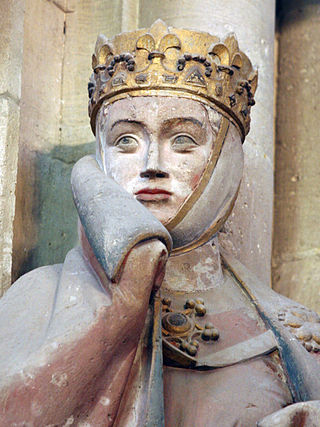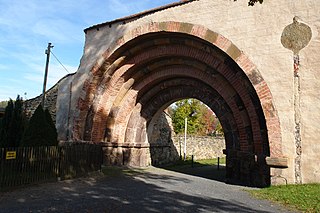
Naumburg is a town in the district Burgenlandkreis, in the state of Saxony-Anhalt, Central Germany. It has a population of around 33,000. The Naumburg Cathedral became a UNESCO World Heritage Site in 2018. This UNESCO designation recognizes the processes that shaped the European continent during the High Middle Ages between 1000 and 1300: Christianization, the so-called "Landesausbau" and the dynamics of cultural exchange and transfer characteristic for this very period.

The Prince-Bishopric of Würzburg was an ecclesiastical principality of the Holy Roman Empire located in Lower Franconia, west of the Prince-Bishopric of Bamberg. Würzburg had been a diocese since 743. As established by the Concordat of 1448, bishops in Germany were chosen by the canons of the cathedral chapter and their election was later confirmed by the pope. Following a common practice in Germany, the prince-bishops of Würzburg were frequently elected to other ecclesiastical principalities as well. The last few prince-bishops resided at the Würzburg Residence, which is one of the grandest Baroque palaces in Europe.

Benno was named Bishop of Meissen in 1066. Venerated since the 13th century, he was canonized in 1523. Benno did much for his diocese, both by ecclesiastical reforms on the Hildebrandine model and by material developments. He was venerated in his native Saxony throughout the Late Middle Ages.
Gertrud of Brunswick was Countess of Katlenburg by marriage to Dietrich II, Count of Katlenburg, Margravine of Frisia by marriage to Henry, Margrave of Frisia, and Margravine of Meissen by marriage to margrave Henry I.

The Diocese of Dresden–Meissen is a Latin Church diocese of Catholic Church in Germany with its seat in Dresden. It is suffragan to the Archdiocese of Berlin.

Naumburg Cathedral, located in Naumburg, Germany, is the former cathedral of the Bishopric of Naumburg-Zeitz. The church building, most of which dates back to the 13th century, is a renowned landmark of the German late Romanesque and was recognised as a UNESCO World Heritage Site in 2018. The west choir with the famous donor portrait statues of the twelve cathedral founders (Stifterfiguren) and the Lettner, works of the Naumburg Master, is one of the most significant early Gothic monuments.
Oda of Meissen, also named Ode, Old High German form for Uta or Ute, was a Saxon countess and member of the Ekkehardiner dynasty. She married Piast Duke Bolesław I the Brave as his fourth and last wife.

Hedwig of Brandenburg, also called Hedwig of Ballenstedt, a member of the House of Ascania, was Margravine of Meissen from 1156 until 1190 by her marriage with Margrave Otto II.

Uta von Ballenstedt, a member of the House of Ascania, was Margravine of Meissen from 1038 until 1046, by marriage to Margrave Eckard II. She is also called Uta of Naumburg as the subject of a famous donor portrait by the Naumburg Master.

The Naumburg Master was an anonymous medieval stone sculptor. His works date to the middle of the 13th century, were executed over a career of more than thirty years, and are counted among the most important artworks of the European Middle Ages.

Altzella Abbey, also Altzelle Abbey, is a former Cistercian monastery near Nossen in Saxony, Germany. The former abbey contains the tombs of the Wettin margraves of Meissen from 1190 to 1381.
Saint Burchard of Meissen was the first Bishop of Meissen, from 968.
Albrecht I of Meissen was Bishop of Meissen from 1150 to 1152.
Martin was Bishop of Meissen from 1170 to 1190.
Heinrich of Meissen was Bishop of Meissen from December 1228 to his death.
Albrecht von Mutzschen otherwise Albrecht II of Meissen or Albrecht II von Mutzschen was Bishop of Meissen from 1258 to 1266.

The Ewiger Pfennig or eternal penny was a coin of the regional pfennig period, which was minted until the late medieval groschen time. These coins are mostly of the Hohlpfennig or "hollow pfennig" type which, unlike bracteates, had to be exchanged regularly for a fee but were not subject to annual recall of coins in circulation, the Münzverruf.









